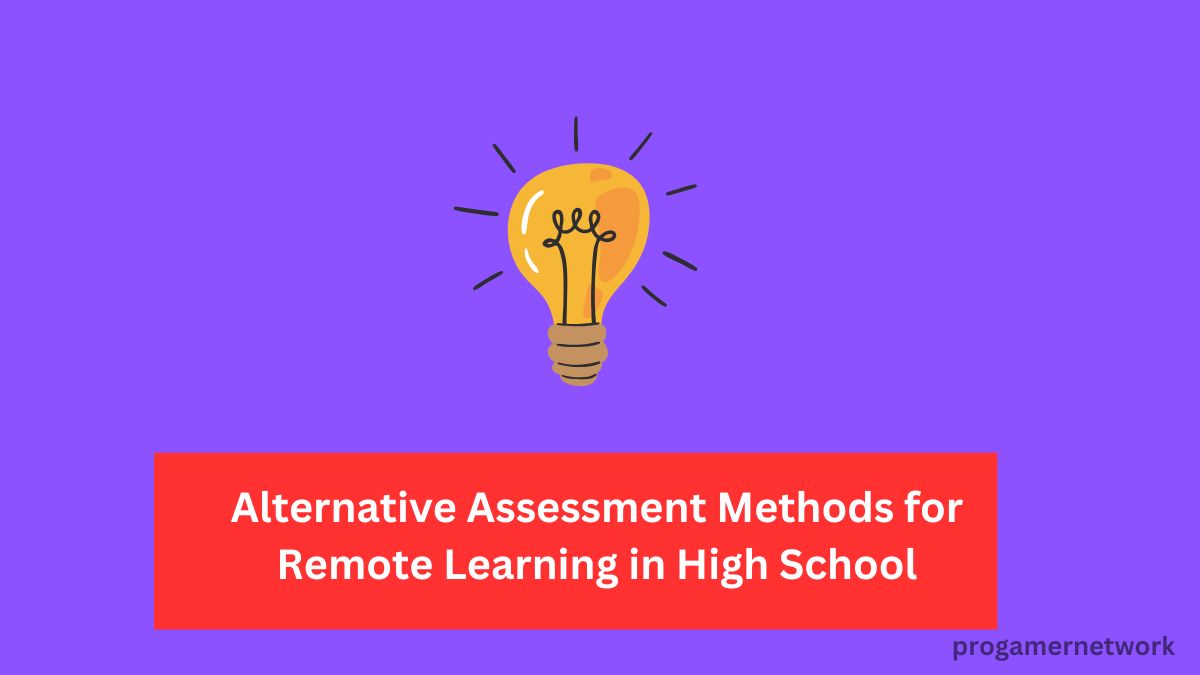Remote learning has become a game-changer in education, especially during the pandemic. Teachers and students have had to adapt quickly to this new normal, and assessments are no exception. So, how do we ensure that assessments remain effective when learning isn’t happening in a traditional classroom?
Importance of Assessment in Education
Assessment plays a crucial role in the educational journey. It helps educators gauge student understanding, identify gaps, and improve teaching strategies. In a remote setting, the stakes feel even higher. We need innovative approaches to assess students meaningfully.
Understanding Alternative Assessment
What Is Alternative Assessment?
Alternative assessment refers to evaluation methods that diverge from standard tests and quizzes. Think of it as a way to look beyond mere memorization. It focuses more on students’ understanding and application of knowledge.
Benefits Over Traditional Assessments
Why should we consider alternative assessments? For starters, they often provide a more comprehensive view of a student’s capabilities. They can assess creativity, critical thinking, and problem-solving skills areas traditional tests might overlook. Plus, they tend to be more engaging for students!
Types of Alternative Assessments
Performance-Based Assessments
Examples and Implementation
Performance-based assessments require students to demonstrate their knowledge through real-life tasks. For example, a science project where students conduct experiments and present findings not only tests their understanding but also develops practical skills. It’s like putting theory into practice!
Portfolio Assessments
How to Create a Digital Portfolio
Portfolios allow students to compile their best work over time. In a digital format, students can showcase projects, essays, and presentations. This method promotes self-reflection and encourages students to take ownership of their learning journey. Plus, it’s a fantastic way to assess growth!
Self and Peer Assessments
Encouraging Student Reflection
Self and peer assessments are all about collaboration and introspection. Students assess their work or their peers’ work, which can foster a sense of community and accountability. It’s a great way to develop critical thinking skills after all, who knows their work best?
Project-Based Learning
Real-World Applications
Project-based learning (PBL) immerses students in real-world challenges. For instance, a project on sustainability might have students create solutions for reducing waste in their community. This not only applies their learning but also builds essential life skills.
Technology Tools for Alternative Assessments
Platforms for Assessments
With technology at our fingertips, various platforms can facilitate alternative assessments. Tools like Google Classroom, Padlet, or Seesaw allow for creativity and collaboration, making assessments more interactive and enjoyable.
Using Multimedia for Engagement
Encouraging students to use videos, podcasts, or presentations can enhance engagement. Imagine a student creating a short film about historical events instead of writing an essay. It’s a fresh take that can make learning stick!
Challenges of Alternative Assessment
Equity and Access Issues
While alternative assessments are beneficial, they come with challenges. Not every student has equal access to technology or resources at home. It’s essential to address these disparities to ensure fair assessments.
Teacher Training Needs
Educators may need support in transitioning to these new assessment methods. Professional development and training can equip teachers with the skills and confidence to implement alternative assessments effectively.
Best Practices for Implementation
Designing Effective Assessments
When designing assessments, clarity is key. Set clear expectations and criteria for success. Rubrics can help students understand what’s required and how they can excel.
Providing Feedback
Feedback is crucial in the learning process. Offering constructive and timely feedback helps students grow and improve. Instead of just grading, focus on how students can enhance their work.
Conclusion
The Future of Assessment in Education
As we move forward, alternative assessment methods will likely play a vital role in education. They can provide a richer, more nuanced understanding of student learning and development. Embracing these methods can create a more engaging and effective learning environment for everyone.
FAQs
What is the main advantage of alternative assessments?
The main advantage is that they assess a wider range of skills and knowledge, promoting critical thinking and real-world application.
How can teachers ensure fairness in assessments?
By considering equity in access to resources and providing varied assessment options, teachers can create a fair assessment environment.
What technology is best for remote assessments?
Tools like Google Classroom, Seesaw, and Flipgrid are excellent for facilitating remote assessments in an engaging way.
Can alternative assessments improve student engagement?
Absolutely! They often involve creative projects and real-world tasks, which can motivate students and make learning more enjoyable.
How do I get started with portfolio assessments?
Begin by explaining the concept to students, then guide them on how to collect and reflect on their work over time. Using a digital platform can simplify the process.

